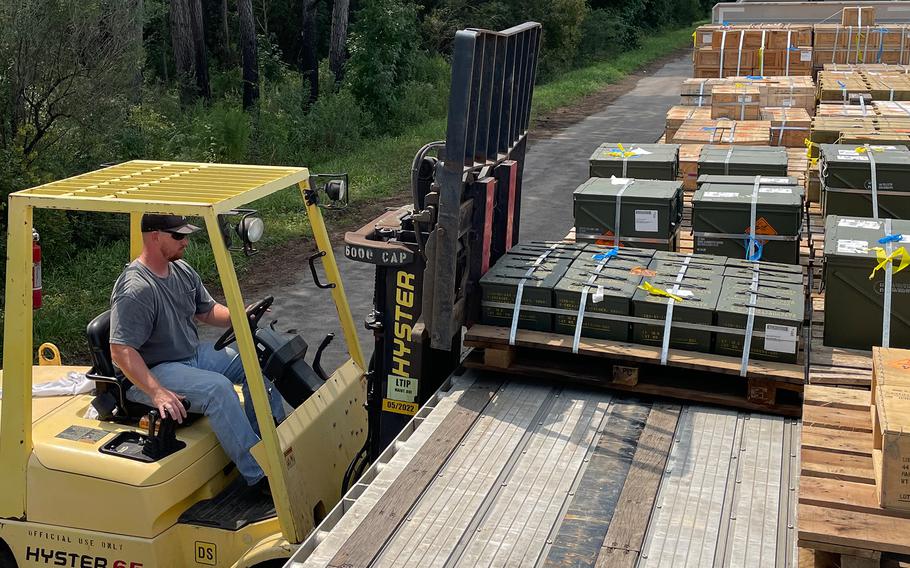
An Anniston Munitions Center employee moves ammunition for distribution. An artificial intelligence program could alter how the U.S. military manages its ammunition supply needs by crunching mounds of data to improve the current approach, Army officials said this week. (U.S. Army)
A new artificial intelligence program could change how the U.S. military manages its ammunition needs by crunching mounds of data to outthink the current approach, Army officials said this week.
Called the Quarterly Resupply Model, it aims to revolutionize the logistics of the military’s expansive ammunition management enterprise, Joint Munitions Command said in a statement Tuesday.
A recent experiment found that a machine learning model generated 27,300 forecasts, achieving a 74% prediction accuracy on ammunition requirements, compared with a 25% accuracy rate for the current system, the command said.
The discovery “represents a significant advancement in ammunition logistics,” Ryan Senkbile, acting director of the command’s munitions logistics distribution division, said in the statement.
The milestone was achieved in September after a yearlong development process, the Army said.
The model can account for variations in ammunition consumption, training schedules and installation requirements, the command said.
For years, the military has relied on the Total Ammunition Management Information System to handle how ammunition is dispersed across the force.
The effort is managed by the Army but relied on by much of the armed forces. The current web-enabled system calculates combat load requirements, validates and routes electronic requests, collects expenditures and prepares forecasts, according to a 2021 Marine Corps summary of the program.
For the military, ensuring adequate amounts of ammunition are fielded to U.S. troops and units worldwide is a multibillion-dollar expense. The Army didn’t indicate whether the AI tool will ultimately replace the current system.
However, the new machine learning approach can analyze historical data to better predict future ammunition requirements, the Army said.
The aim of the new model is to reduce shipment frequency, optimize inventory levels and enhance forecasting accuracy, Senkbile said.
The model, which is operating at relevant stateside locations, is still having its performance monitored, the Army said, adding that the data-driven approach “allows for continuous improvement.”